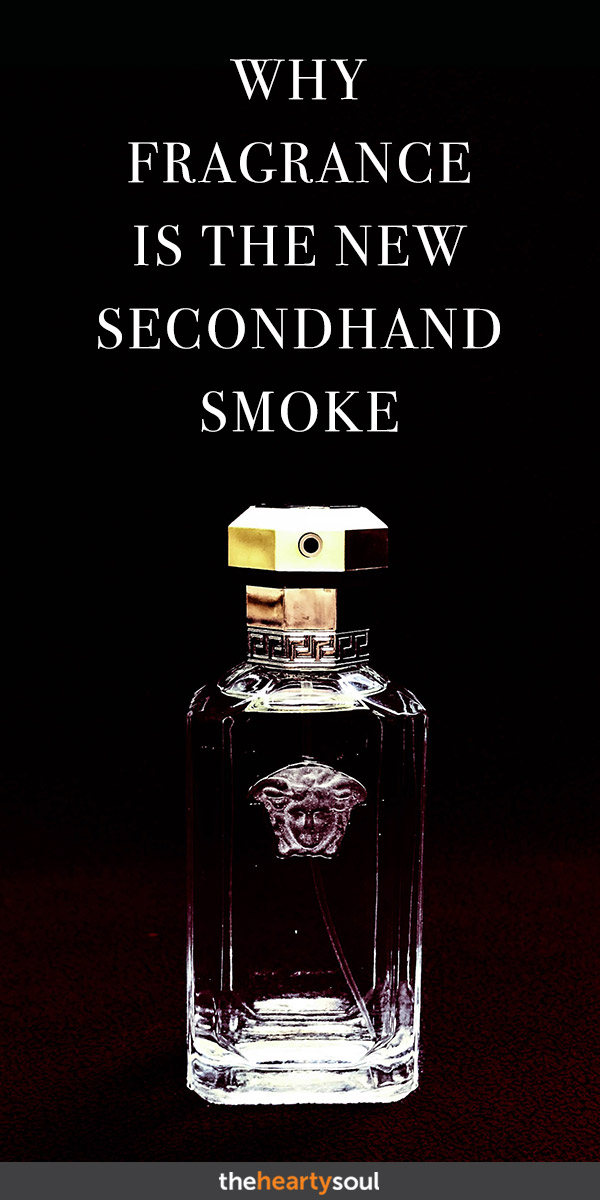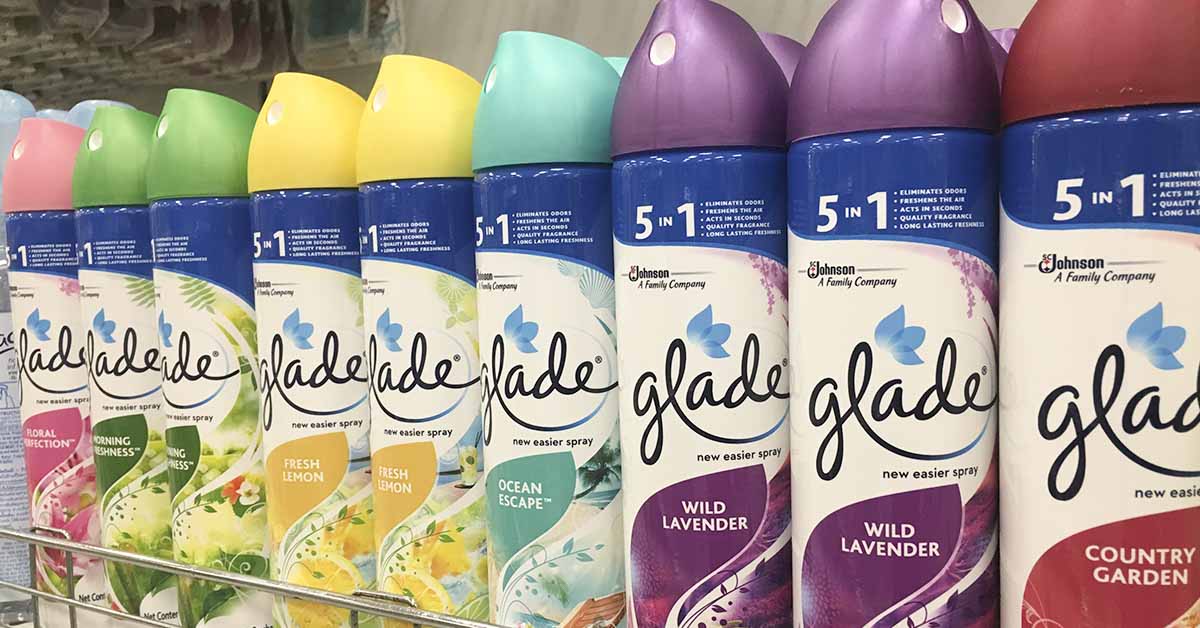This article was originally published in July 2019 and has since been updated.
You’ve seen it on the label of your laundry detergent.
You’ve seen it on the label of your personal care products such as lotion and shampoo.
You’ve seen it on the label of your dish soap, perfume, and bug spray.
Simply the word “fragrance.”
But what exactly does this word mean, and should we be worried about it?
“Fragrance” is a term that includes thousands of chemicals that are not, in most cases, required to be disclosed to the consumer.
Fragrance, the New ‘Secondhand Smoke’?
Meet the Chemicals Which Make Up ‘Fragrance’
According to the International Fragrance Association, the word fragrance (sometimes referred to as “parfum”) can have nearly 4,000 different meanings [1].
Some of these chemicals are natural derivatives of plants while others are man-made compounds that have been proven to be toxic to humans.
The manufacturer of the product does not have to disclose exactly which chemicals are in their product’s fragrance according to the Food and Drug Administration [2] because this information is considered a “trade secret”.
Here are just a few chemicals that may be included under the term fragrance:
- Styrene. Styrene is present in many household cleaning products and perfumes. The Environmental Working Group reports that styrene is “reasonably anticipated to be a human carcinogen” [3].
- Ethylene Glycol. This ingredient is also present in antifreeze and brake fluid. The Environmental Protection Agency has not issued a classification for ethylene glycol in regards to carcinogenicity [4]; however, accidental ingestion or acute exposure can affect kidney function, the nervous system, lungs, and heart [5].
- Isobutyl Formate. This chemical “may cause toxic effects if inhaled or absorbed through skin” and also “may cause pollution” from water runoff [6].
- Dibutyl Phthalate. Dibutyl phthalate, according to the Environmental Working Group, disrupts the endocrine system, is toxic to organs, and is a known respiratory toxicant [7].
- Acetophenone. This chemical is known to cause skin irritation, a weakened pulse, and sedative effects with no information available on the effects of long-term exposure [8].
Some of these chemicals, including d-Limonene [9], and amyl butyrate [10] have not been well studied in humans and so there is limited toxicity data outside of that which unreliable and unethical animal studies provide.
Read: “Forever Chemicals” Makers Covered Up Health Risks For Decades, Secret Documents Reveal
Medical Problems Linked to Chemicals in Fragrance
The many chemicals associated with the word “fragrance” can have significant health effects and even a single product can emit hundreds of different chemicals, according to research [11].
These synthetic chemicals can impact the central nervous system, the reproductive system, the respiratory system, and some are even carcinogenic. With most of these agents derived from petroleum, experts speculate that cancers, neurological disorders, autoimmune disorders, allergies, and infertility could all be linked to these toxins [12].
This information isn’t entirely surprising given that infertility has been linked to exposure to other chemicals such as flame retardants in furniture and carpet.
A report published in 2010 from the Environmental Working Group shows that many popular fragrances contain hormone-disrupting chemicals and many other chemicals that have not been tested for safety. Chemicals that disrupt hormones—also called endocrine disruptors—can have a variety of effects on body, from disrupting the male and female reproductive system to neurodevelopmental disorders to cancers to thyroid, bone, and immune system problems [13].
Research shows that some of these chemicals are present in breast milk, can cause migraines, and are even ending up in our water supply [14].
How You Can Avoid Products with Fragrance
If you want to avoid products that have fragrance in them, you’ll need to do a little more work than just picking up a “fragrance-free” version of mainstream products at the store.
The truth is that even products labeled “fragrance-free” can still have a scent to them, as the definition of “fragrance-free” merely means that the product does not contain chemicals that “impart or mask a scent”, but there may be other harmful chemicals in the product that do have a scent [15].
It’s always important to read the label of a product to inform yourself. Fragrance is found in conventional candles, perfume, air fresheners, dish soap, laundry and dish detergent, sunscreen, lotion, makeup, and dryer sheets. For example, Tide lists on its ingredient list for their “pods” that fragrance is added to “provide freshness.” I think we can agree it’s just making us sick, not providing freshness.
Other products that contain fragrance include:
- Dryer sheets
- Dawn Dish Soap [16]
- Yankee Candle Air Fresheners
- Bath and Body Works Products
- Some Always Pads [17]
- MAC Prep + Prime Hydrating Mist
- Many Conventional Perfume Brands
- Teal’s Lavender Epsom Salt
It can be hard to know which chemicals are in the product that you’re using that says it contains “fragrance.”
Some Natural Alternatives to Consider
Just speaking for myself and where I shop, but it feels easier than ever to pick up products that just make sense for us and for the planet.
For example, Dr. Bronner’s Castile Soap is scented with essential oils, not tested on animals, and can be used for everything from laundry detergent to dish soap. You can easily avoid products that are laced with toxic chemicals and are tested on animals.
Also, vinegar works wonders on windows, mirrors, countertops, and just about anything else you want to clean and disinfect. And, it’s cheap!
Making your own perfume with essential oils is easy and not as expensive as conventional perfume that could end up giving you a migraine later. You can either make your own products or buy ones that are naturally scented to build a better environment for your home.
Where can you find these products? While many stores are carrying natural alternatives to items, for your first time, browsing an organic or natural store in person can help you familiarize yourself with what brands do not contain fragrance and don’t test on animals. Be vigilant, however—some “natural” products still contain fragrance.
After this, if you prefer, you can do a bit of online shopping and find what’s cheapest and what you like best. It might take a few tries to find brands you really love—but it’s absolutely worth it to avoid all the toxic chemicals that come with a simple word like fragrance.

Keep Reading: Study finds wearing certain type of mask may be exposing you to elevated levels of toxic chemicals
Sources
- “What is the “Fragrance Loophole”? (How Toxic Chemicals HIDE In Products)” The Filerty. September 6, 2023.
- “Fragrances in Cosmetics.” FDA
- “Expert Panel Confirms that Fragrance Ingredient Can Cause Cancer.” Enviro Blog. Tina Sigurdson (EWG). August 7, 2014.
- “Ethylene Glycol.” EPA
- “Ethylene Glycol-ToxFAQs™.” CDC
- “ISOBUTYL FORMATE.” NOAA
- “Dibutyl Phthalate.” Skin Deep
- “Acetophenone.” EPA
- “d-Limonene; CASRN 5989-27-5.” EPA
- “Amy Butyrate.” NJ
- “INDOOR AIR QUALITY: Scented Products Emit a Bouquet of VOCs.” NCBI. Carol Potera. January 2011.
- “Millions Report Adverse Reactions to Perfumes and Fragrances.” Invisible Disabilities Association
- “Fragrance: emerging health and environmental concerns.” Wiley. Betty Bridges. September 2002.
- https://onlinelibrary.wiley.com/doi/epdf/10.1002/ffj.1106
- https://www.epa.gov/sites/production/files/2016-10/documents/saferchoice-factsheet-fragrancefree_0.pdf
- “Dawn Ultra Concentrated Dishwashing Liquid, Original.” EWG
- “What are Always products made of? Always

